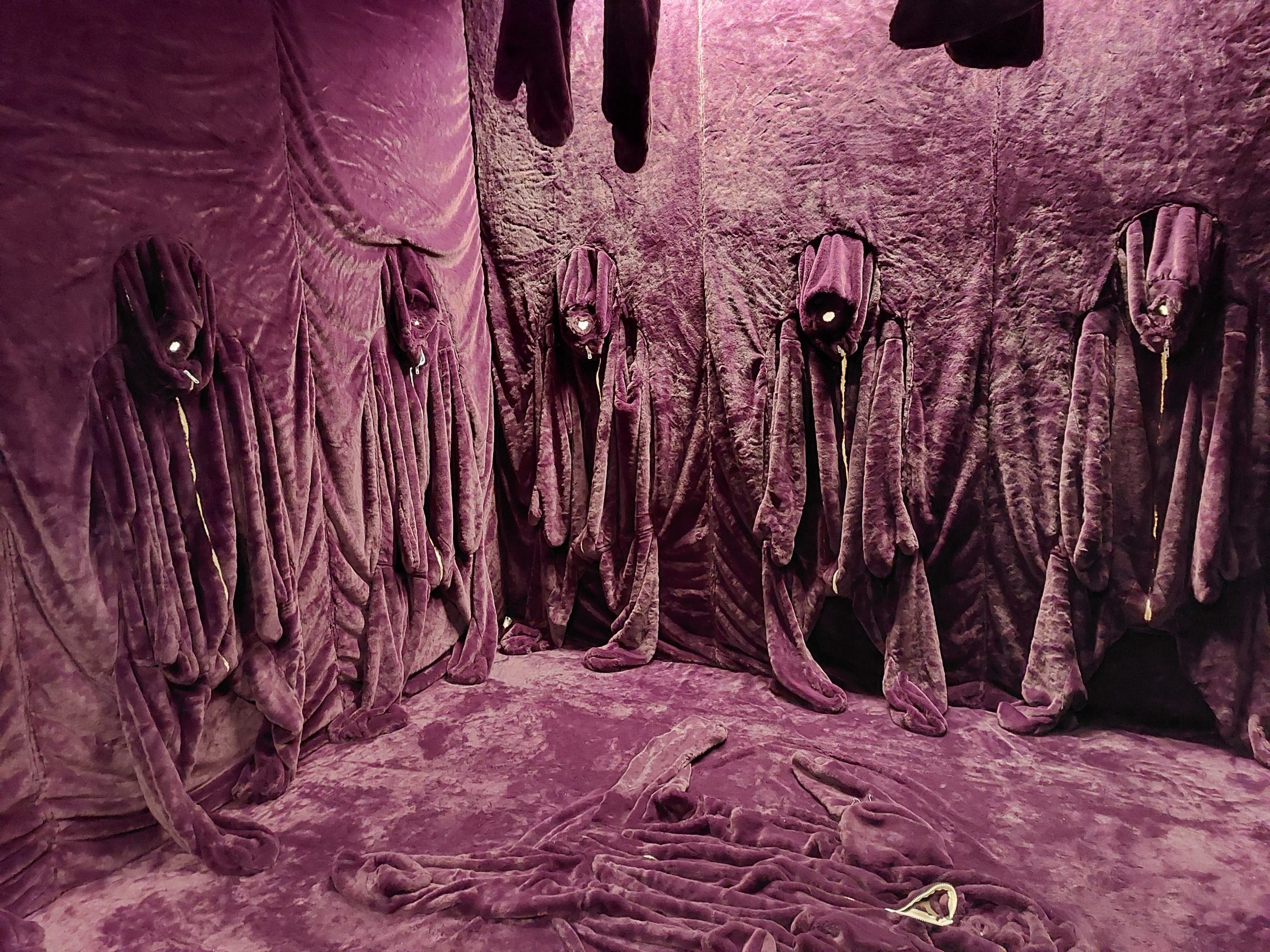LONDON — Wearable objects resembling empty skins, replete with openings, sleeves, eye holes, and zips, populate late artist Nicola L.’s long-running sculptural series Pénétrables (c. 1960–2018). Many of them were originally designed as participatory works, with viewers invited to insert arms, legs, or faces in a humorous and horrifying enlivening of sagging, hollow bodies.
For conservation purposes, visitors to Nicola L.: I Am the Last Woman Object at the Camden Art Centre are not allowed to touch the original works. However, at the heart of the exhibition is an ambitious — and touchable — reconstruction of “Fur Room” (1970/2020), which was shown at the gallery 50 years ago in a group show titled Soft Art. The piece consists of a cubic metal armature encased in purple faux fur. Every facet of this room-within-a-room includes empty “skins” in the same material; legs, arms, and balaclava-like masks flop from the walls, floor, and ceiling.
The experience of pushing a hand into a soft sleeve was both comforting and sinister, sensual and shudder-inducing, just as seeing a skin being filled by an anonymous limb is deeply unsettling. The forms simultaneously evoke coziness and discomfort, recalling both fleecy pajamas and protective hazard suits. While the soft fur is tantalizingly tactile, I was repulsed by the idea of it becoming dirty, sweaty, or germ-infested.
The exhibition itself effectively exposes the awkwardness of participatory artwork. I found myself fumbling to discern and navigate unspoken rules of conduct in the near-silence of the brightly lit gallery. Then came the physical discomfort of interacting with the fur room, which requires an act of faith from the visitor when they bury themselves in the contours of the soft purple fabric. This nuanced set of physical and social relations is akin to the awkwardness of sexual encounters, which, like Nicola L.’s sculptures, can be simultaneously beautiful, humorous, and menacing.

Gender relations underscore the exhibition and Nicola L.’s practice as a whole in both explicit and implicit ways. Her use of the term “pénétrables” reminds us that the female body could be defined by its penetrability — and yet, the complex associations of these works signify the potentially generative contradictions of female experience, which can simultaneously encompass oppressive objectification and the creative act of childbirth, for example. In Nicola L.’s world, the female body can be both vulnerable and protective, objectified orifice and multiplicitous entity.
These contradictions characterize Nicola L.’s work, which plays with the fluid interrelations of life and art, opposing emotional states, and the cosmological and the quotidian. Many of the pieces in I Am the Last Woman Object bear relation to household items, such as her pénétrable “Grey Rug for Five People” (1975) or her various sculptural sofas shaped like feet or dismembered men and women, their body parts arranged as throw pillows.
The exhibition consistently demonstrates Nicola L’s interest in the insidious juncture between domestic objects and gendered human forms and behaviors. This is particularly evident in the work from which the exhibition takes its title, “Little TV Woman” (1969), a colossal, faceless stuffed doll that has drawers fitted in her breasts and pelvis, as well as a television stuck in her abdomen. The text on the screen reads: “I am the last woman object. You can take my lips, touch my breasts, caress my stomach, my sex. But I repeat it. It is the last time.” This oxymoronic statement of defiance is both strengthened and undermined by its permanent state of reiteration. Will women ever truly be objectified for the last time?


Nicola L.: I Am The Last Woman Object continues at Camden Art Centre (Arkwright Road, London, United Kingdom) through December 29. The exhibition was curated by Martin Clark.






Leave a Reply